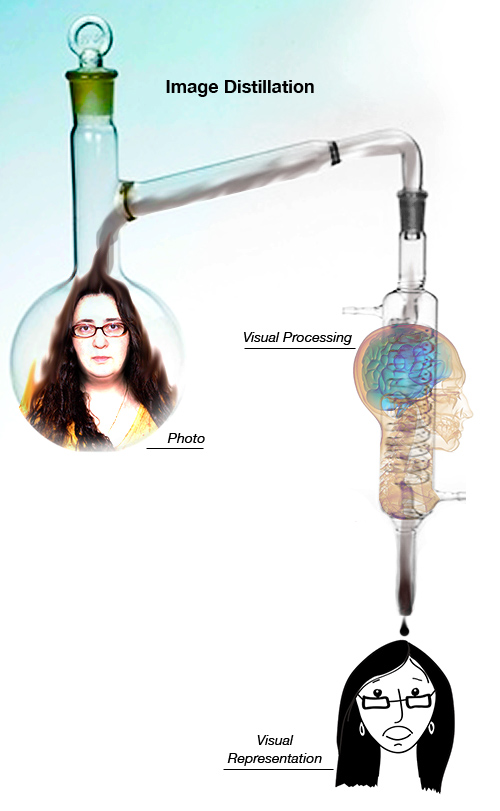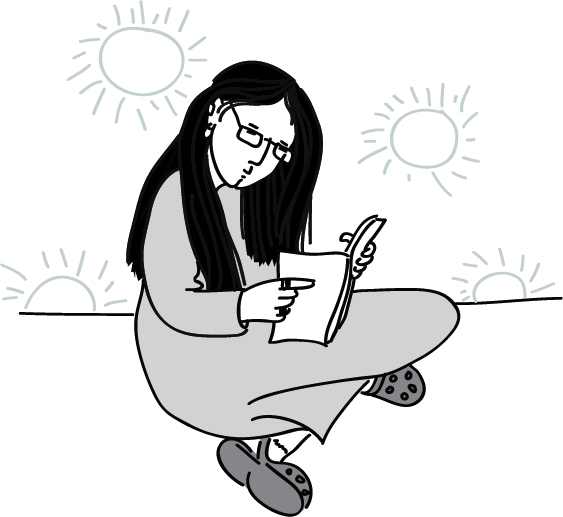Harmanci, R. (2010). “For digital artists, apps provide new palette.” New York Times Online. Retrieved on October 4, 2010: http://www.nytimes.com/2010/08/20/us/20bciart.html To illustrate the impact of mobile/handheld-device technology on the arts, this article describes the work of several individual artists who have used iPhone/iPad applications as an artistic format. In my overview, I focus on the work by Scott Snibbe and pose the following question: what is it about handheld apps that sets them apart and makes them a more successful environment for interactive art than any other? Scott Snibbe is an artist for whom interactivity, i.e. the opportunity for audience participation, is a central theme. His installations are often designed to capture human bodily actions and respond to them. The audience thus has the experience of bringing an art piece’s content into existence. For example, in Falling Girl (2008) and Make Like a Tree (2006), people’s movements are replicated, with some time lag, by silhouettes projected onto screens, while in Blow-Up (2005) people’s breath triggers fans that reproduce its spatio-temporal contour. Snibbe’s very popular mobile apps are closely based on an earlier Dynamic Systems interactive series that involved manual action, except that their original version used more traditional cursor-based interface. …
51 search results for "visual design"
Glossary
This page will slowly accumulate the glossary of terms that I use in my work, classes I teach, and in the book. It will take awhile, but eventually, I hope to approach completeness. A Action Cycle evaluate the state of the world –> interpret the data –> create a new goal –> create an intention to do an action that advances the state of the world closer to the desired goal –> figure out the actual physical motions that need to done to execute the intention –> evaluate the state of the world again References Norman, D. (2002). “The Psychology of Everyday Things.” Basic Books. ISBN-13: 978-0465067107 Affordances for the purposes of product design, affordances are user perceivable elements that suggest the possible range of possible actions with the interface that can be used to achieved a desired goal References Norman, D. (2002). “The Psychology of Everyday Things.” Basic Books. ISBN-13: 978-0465067107 Autopilot Errors inattention errors occur when we are very comfortable doing something—we are experts at performing the sequence of actions. For example, we rarely end up at a store when we are driving around looking for a particular address. So anytime a person is asked to perform the…
Cognitive Blindness, Conceptual Design, Contributor, Ethnographic & User Data, Interaction Design, Perception, Personality, Product Design Strategy, Users
On “Flattery Will Get You Far”
by mwaters •
Article: Valdesolo, P. (2010). “Flattery Will Get You So Far.” Scientific American Online, Scientificamerican.com. Retrieved on 30 June 2010: http://www.scientificamerican.com/article.cfm?id=flattery-will-get-you-far Summary: Its not uncommon for people to kiss up and flatter others in their everyday lives, with the hopes that such remarks will get them what they want. Many times these motives are easily recognized and written off as insincere. However it’s quite possible that the effects of such flattery are more powerful than we think. Researchers are taking a deeper look into how blatant flattering influences consumer loyalty and sales. A study conducted by the Hong Kong University of Science and Technology found that consumers exposed to a department store’s advertising campaign, commending shoppers on their sense of style, were likely to continue making purchases at the store. Furthermore, these consumers, who explicitly expressed their awareness of the stores attempt to manipulate behavior through flattery, were likely to join the store club. Researchers believe this type of flattery works by reinforcing the above average ideas that individuals reserve for themselves, as well as increasing esteem in areas where some feel low. The article suggests that positive images in advertising, when linked to products, might also subconsciously influence consumer desire…
Cognitive Blindness, Contributor, Ethnographic & User Data, Interface Design
On Skin Color and Pain Empathy
by Sara.Rahiman •
Mann, D. (2010). “Skin Color Affects Ability to Empathize with Pain.” CNN.com. Retrieved on 23 June 2010: http://edition.cnn.com/2010/HEALTH/05/27/race.empathy/index.html?hpt=C2 An article written by Denise Mann, Skin color affects ability to empathize with pain”, raises some controversial questions around race. According to Mann’s article Neuroscience research has demonstrated that humans are hardwired to feel another person’s pain. For example when someone stumps their toe or fall, people reacts in ways as if they felt the other person’s pain. A study conducted in Italy argues that people feel less empathy for some that has different skin tone. Researchers have found that one reaction to another person’s pain can be racially subjective. Can race really play a role in pain empathy? The study monitored people’s nervous systems activity by tracking heart rates and sweat gland activity when they were watching clips of white and black hands being pricked by needles. The finding was that observers reacted more to the pain of someone with the same skin tone. The experiment was also used on a purple hand in which participants empathize with more than they did with a hand from another race. The author takes these claims and applies it to how medical practitioners may…
Background Knowledge, Background Knowledge Errors, Diagnostic Errors, Perception, Pipsqueak Articles, Users
Distilling Information
by Olga Werby •

When it comes to my students’ participation in this blog, it’s all about distilling information found in the news to something product designers in our midst would find useful, on a practical level. Consider the illustration below. We see a person’s face (mine in this case). We can describe some of the features. But what do we actually remember? Remembering complex visual information is hard—too many details. Recalling a drawing is easier. That’s because an artist already distilled the complexity into its essential parts—only those details that are required to remind us of a particular individual are included in the rendering. We are all pretty good at judging wether a portrait looks like the person it was intended to represent. We can quickly say if it does or if it doesn’t. But it would be difficult to explain what details in the illustration make the likeness or what’s missing from the drawing that didn’t hit its mark. Distillation of information is hard. Some people are good at it, some are not. It’s an acquired skill. And each category (e.g. sensory like visual, audio, tactile or knowledge-based like physics, economics, biology) requires its own training and its own set of talents.…
Conceptual Design, Contributor, Interaction Design, Interface Design, Users
Do we want to be citizen or customers.
by Ben •
Article: Knight, M. (2008). “Do we want to be citizen or customers.” CNN. Retrieved on 21 June, 2008. http://www.cnn.com/2008/TECH/science/06/12/Rykwert/index.html Summary: In this interview, Joseph Rykwert, an architectural historian, offers his view of the city and the transitions it has gone through. He points out that most people don’t like the new building and skyscrapers being constructed, often mocking them with sexual connotation. In the past skyscrapers symbolized the energy within an urban environment, yet as more and more are being built, buildings are now more of an eye sore. He talks about how gates communities and certain buildings (whether they are under high security or are just constructed to be uninviting) cut through public space, taking away a section of the city. The need for gated communities is a recent phenomenon, and is a reflection of the growing inequalities of our society. He comments that tall buildings built after the 60’s don’t do a good job of integrating with the streets. Their entrance halls have become less and less welcoming, characterized by tighter space, less public displays, and more security. This is because the streets were no longer viewed as a safe place, which was reflected in the design…
Recommended Books

As I find interesting and relevant books, I will post them on this page with direct links to their descriptions, reviews, and purchase pages on Amazon.com. I only recommend the books I’ve read and only those that I find informative for product design. Watters, E. (2010). “Crazy Like Us” Free Press. ISBN-13: 978-141658708 “Crazy Like Us” is an amazing book. Ethan Watters, a San Francisco native, researched the impact of globalization of mental health care and the perception of psychological disease and diagnosis on the patients and their community. Walters examines several cases: instances and treatment of Post Traumatic Stress Disorder post 2005 tsunami; cases of Anorexia in the East; treatment of depression in Japan; and living with schizophrenia in Africa. In all of these situations, there has been a cultural shift due to the influence of modern Western medicine. For all those interested in how information and attitudes of the West transform culture and beliefs in other cultures it is an indispensable book. An interesting development: On July 2, 2012, GlaxoSmithKline (GSK) plead guilty to promoting two drugs for unapproved uses and failing to report safety data about a diabetes drug to the Food and Drug Administration (FDA). Read…
